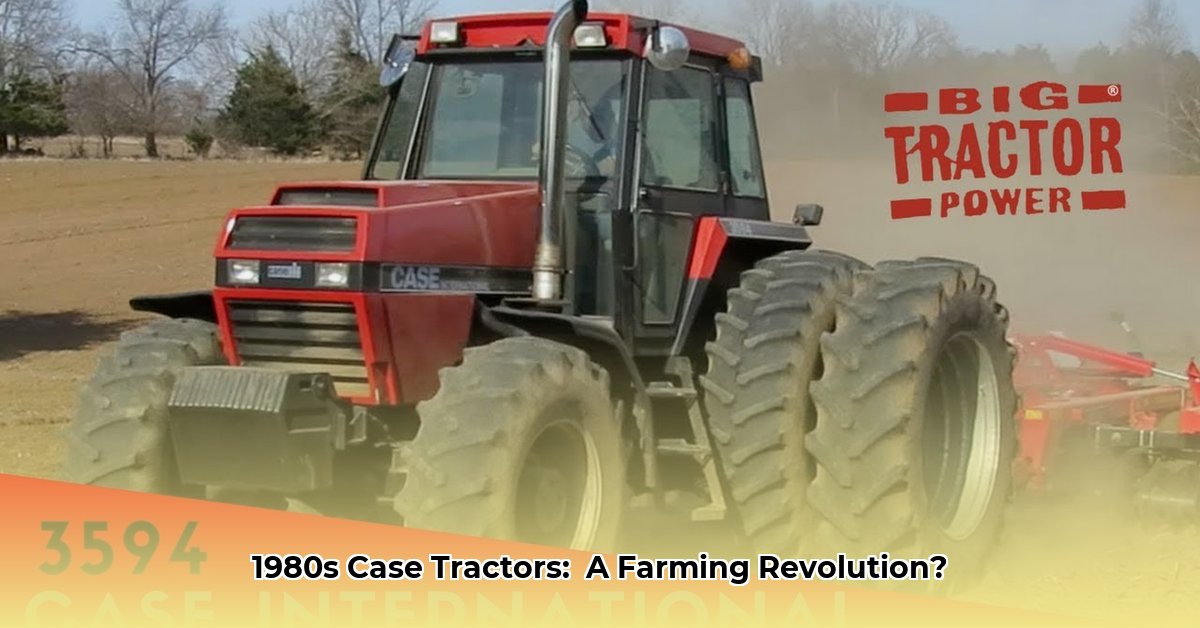
1980: A decade of big hair, iconic music, and significant advancements in agricultural machinery. Case, a name synonymous with tractors, played a pivotal role, producing a range of models that redefined farming practices. This journey explores the history of Case tractors from this era, examining their innovations, efficiency gains, and surprisingly, their contribution to sustainable farming practices. We'll delve into specific models, their unique features, and their lasting impact on food production. For detailed specifications on certain models, check out these 1980 Case Tractor Specs.
The Rise of Power: Horsepower and Engine Advancements
The 1980s witnessed farmers demanding increased power from their machinery, and Case responded. Their tractors showcased a substantial horsepower increase over previous models. This wasn't merely an aesthetic upgrade; larger farms required machines capable of maximizing productivity across expansive acreages. Pinpointing the exact horsepower for each 1980 Case model proves challenging due to limited historical records, yet the overall power boost is undeniable. However, did this rise in power come at an environmental cost? This is a question deserving further investigation. The transition to internal combustion engines was also significant. While specific fuel types varied, the shift from steam-powered tractors represented immense progress. This wasn't just about speed; it drastically improved fuel efficiency, laying the groundwork for future sustainable farming enhancements. Did this increased efficiency outweigh the environmental implications of increased fuel consumption? This question necessitates further scrutiny of the data.
A Tractor for Every Need: Model Diversity and Market Understanding
Case didn't offer a one-size-fits-all solution in 1980. They provided a diverse range of tractors acknowledging the varying sizes and needs of farms. Smaller models catered to smaller plots, while larger machines tackled the extensive fields of commercial operations. This approach highlights Case's market understanding and recognition of evolving agricultural demands. Small family farms possess different needs than large-scale commercial operations; Case ensured they had the right tool for the job. This strategic diversification was a key factor in their success during this period. Were there specific models that were particularly popular among certain types of farms? Further research could illuminate this aspect of Case's market strategy.
Model Features and Technological Advancements
Comprehensive details on every 1980 Case model are limited. However, improvements in transmissions, hydraulic systems, and operator comfort were common features. These weren't mere cosmetic changes; they significantly impacted efficiency and operator well-being. Improved operator comfort directly translated to increased productivity and a healthier work environment. Did these design improvements contribute to the decreased need for manual labor on farms? This is a question worth exploring as it touches on the broader societal impact of these machines.
A Lasting Legacy: Impact and Future Research
1980 Case tractors, despite their age, mark a turning point in agricultural mechanization. They exemplify the ongoing push for greater power and efficiency, influencing farming practices for decades. They represent more than just equipment; they symbolize progress and innovation. Studying these tractors provides a deeper understanding of agricultural technology's evolution, leading to the advanced machinery used today. Their story is part of a larger narrative—a tale of progress written in steel and horsepower.
The Unsolved Mystery: Sustainability and Environmental Considerations
While we've praised the power and versatility of 1980s Case tractors, their environmental impact requires further analysis. Further research is crucial to assess fully the environmental consequences of the various fuel types used. This analysis would provide vital context, connecting past technological advancements to our modern focus on environmentally conscious agriculture. A comparative analysis of efficiency gains versus environmental costs would significantly enhance our understanding of the long-term sustainability of these machines. This area necessitates further study to provide a complete picture of their impact. It is plausible that studies will reveal heightened emissions from certain fuels compared to their modern counterparts.
Key Takeaways:
- The 1980s Case tractor lineup reflects a significant shift towards greater power and efficiency in agricultural machinery.
- The diverse range of models offered by Case demonstrates their understanding of the varying needs of farms of different sizes.
- Further research is needed to fully assess the environmental impact of these machines, considering fuel types and manufacturing processes.